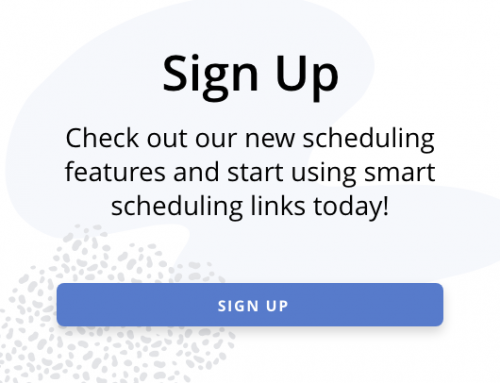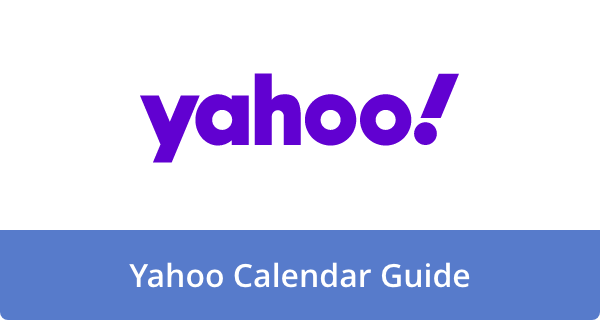

Did you set lofty business growth goals for yourself this year? You won’t reach them by simply dreaming and hoping you’ll somehow achieve them. There’s an old claim that the definition of insanity is expecting different results while doing the same redundant thing. This saying may not be technically true from a psychological standpoint, but it does have some merit. In life or business, you must step outside your typical modus operandi to move forward in a different direction.
For example, if your business is stagnant and not reaching growth goals, changing your business practices is crucial. Operating like you always have will most likely only lead to continued stagnation. You need to be ready to adapt and try new approaches if you expect to reach your goal. Want to have a bigger, more successful company by this time next year? Here are five productive business practices that can help you realize your goal.
1. Implement a Shared Team Calendar
A decade ago, many businesspeople hung large calendar boards in their offices to help manage their time. While they served their intended purpose, they were bulky, unsightly, and time-consuming to fill out with upcoming assignments and commitments. They also weren’t mobile, so you couldn’t easily share your calendar with colleagues. Fortunately, technology has significantly improved the process of calendaring and communicating between teams.
Implementing a shared online team calendar can boost productivity and help your business thrive in various ways. It can facilitate communication between teams, avoid wasted time, and keep people on track to meet project goals. Many scheduling apps, such as Calendar, Google Calendar, Microsoft Calendar, and others, offer team calendar features to keep everyone on the same page. They offer instant updates so everyone stays coordinated and in the know. They also enhance productivity and growth by enabling proper time management.
Assessing your team’s unique needs is essential when choosing the right shared calendar tool for your business. For example, does your team need a calendar tool that integrates with your existing project management software? Do you need a calendar tool accessible outside of the workplace for team members who travel frequently? Ensure the team calendar software you choose is a good fit for your workplace before investing in it.
2. Leverage AI to Your Advantage
Technology is one of those industries that continues to push the boundaries of what’s possible. AI is one of those incredible high-tech innovations that has taken the world by storm. The right AI tools can increase business productivity and streamline your processes so you can focus on growing your business. From automating mundane tasks to improving customer interactions with your company, AI can perform many professional duties.
For example, predictive sales AI can boost productivity and growth by helping you gain quality business leads. With help from predictive sales AI, you can stop wasting time collecting low-quality leads that don’t yield good results. AI can also help you extract statistics and other information from hundreds or thousands of documents in minutes. With this information, AI can reveal crucial insights about how your business is currently operating and where you can make improvements.
A growing number of businesses now use AI chatbots to improve business-to-customer interactions. Chatbots can respond to customer inquiries and concerns with high speed and accuracy. They can eliminate human-driven errors and elevate the customer experience, making you more likely to earn repeat business. If you aren’t currently leveraging the productive power of AI, consider performing an audit to see how this incredible technology can help you grow your business.
3. Download Project Management Software
Are your teams still trying to juggle projects the old-fashioned way—through constant email communications and meetings? If so, they’re wasting time and following an outdated model that is inconducive to growth. When teams fall short on project management, missed deadlines become a pervasive problem. The occasional missed deadline may not have catastrophic consequences, mainly if your team course corrects to tackle the next deadline. However, when teams consistently fall behind on their deadlines, it becomes nearly impossible to meet growth goals.
If your company struggles to meet project launch dates and other deadlines, it’s time to overhaul your project management approach. Fortunately, plenty of tools can help you in this area. Project management tools like ClickUp, Asana, or Trello can make a huge difference in your ability to stay on track. These tools boost collaboration and make it easier for teams and individuals to see what they’re supposed to do and when.
The nice thing about leading project management tools is that they make it nearly impossible to point fingers unfairly. Everyone who’s collaborating on the project can see the project’s real-time progression through its various phases. They can see when it’s their turn to work on a piece of the project and how much time they have to complete their task. In this way, project management software keeps everyone accountable and on schedule.
4. Set Clear Goals
In business and life, you need goals to keep you moving in the right direction. Your goals should be specific and quantifiable rather than vague for best results. Setting clear goals can help guide your business decisions, boost team performance, and help you avoid stagnation. It can also help you maintain a clear vision of where you want your business to be at a certain point down the road.
There are many different ways to set up a goal-driven business structure. However, the SMART framework is popular professionally because it’s clear and effective. SMART goals meet the following criteria:
- Specific: They are clear and specific, so you know exactly what you want to achieve and when.
- Measurable: Your goals need to be quantifiable so you can easily track your progress.
- Achievable: Setting unrealistic goals effectively drives yourself and your employees toward burnout and disappointment.
- Relevant: Any goal you make should help you achieve your primary business objectives.
- Time-bound: Setting a deadline is crucial for achieving your goals. Otherwise, you could chase the same target indefinitely without ever reaching it.
One example of a SMART goal is to increase sales by 15% within the next 6 months. You might implement a new sales strategy to help you reach your goal. Once you have a SMART goal in place, communicate it to all your team members so they know what they’re all working toward for the next 6 months.
5. Incentivize and Reward
Have you ever worked for a boss who didn’t recognize, appreciate, or reward your efforts? If so, you probably experienced a decreased morale and a decreased desire to perform well. No one wants to be more productive if there’s no reward attached to their increased effort. As an employer or manager who’s aiming for business growth, it’s crucial to incentivize and reward your team members.
Employee recognition can be a powerful motivator for many people. Publicly recognizing the outstanding efforts of specific individuals and/or teams can foster a sense of loyalty and ownership. It can also stimulate friendly competition, a great way to boost productivity even more.
However, some people prefer monetary or tangible rewards more than they appreciate the fleeting limelight. Consider asking your employees what types of incentives they prefer for reaching their individual and team goals. Some may want a big bonus at the end of the quarter, while others may choose to go on a company-paid vacation. When setting up an incentive structure for meeting growth goals, take employee feedback to heart.
Maintaining a constant pattern of business growth can be a challenge, but it’s fundamental to your long-term success. Use these productivity practices to help you move steadily toward your growth goals.
Featured Image Credit:











Howie Jones
My name is Howie and I'm a Customer Success Manager at Calendar. I like to ensure our customers get the best experience using our product. If you have questions email me howie at calendar.com